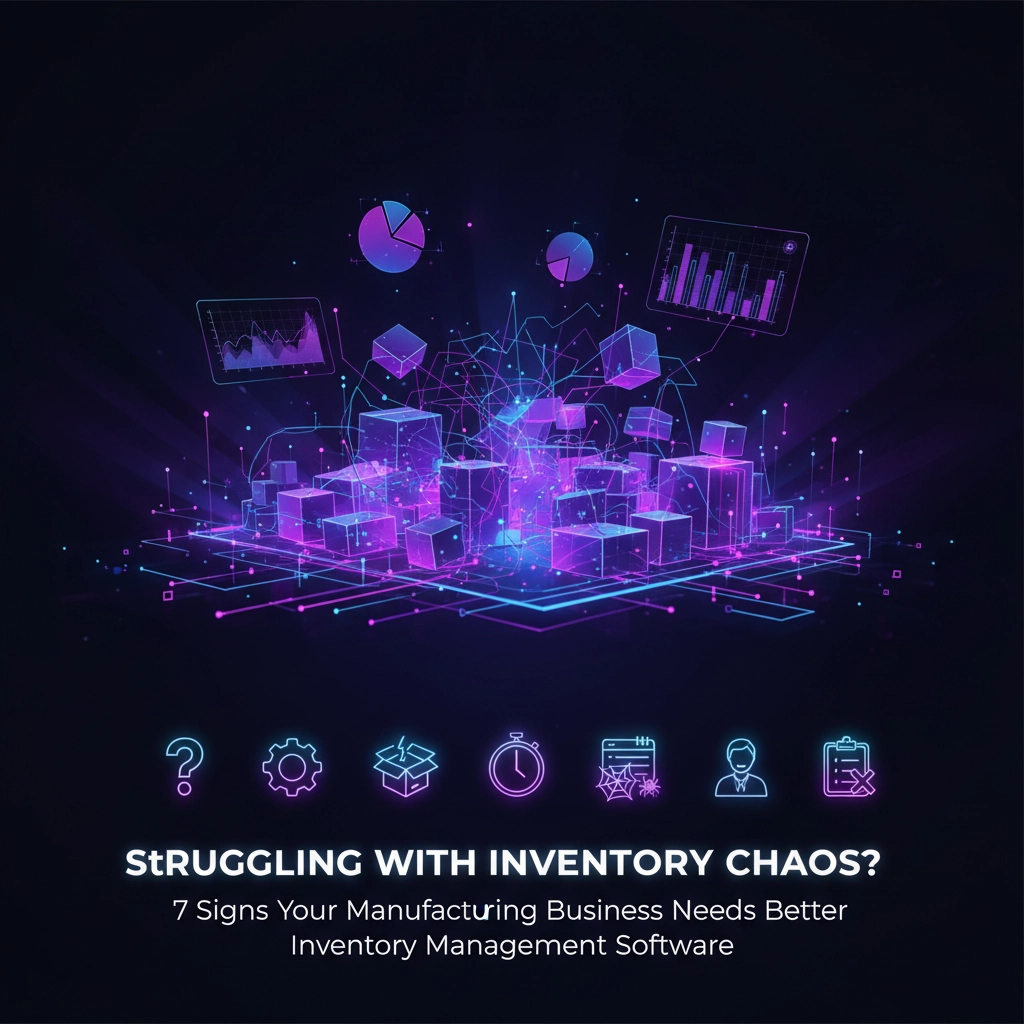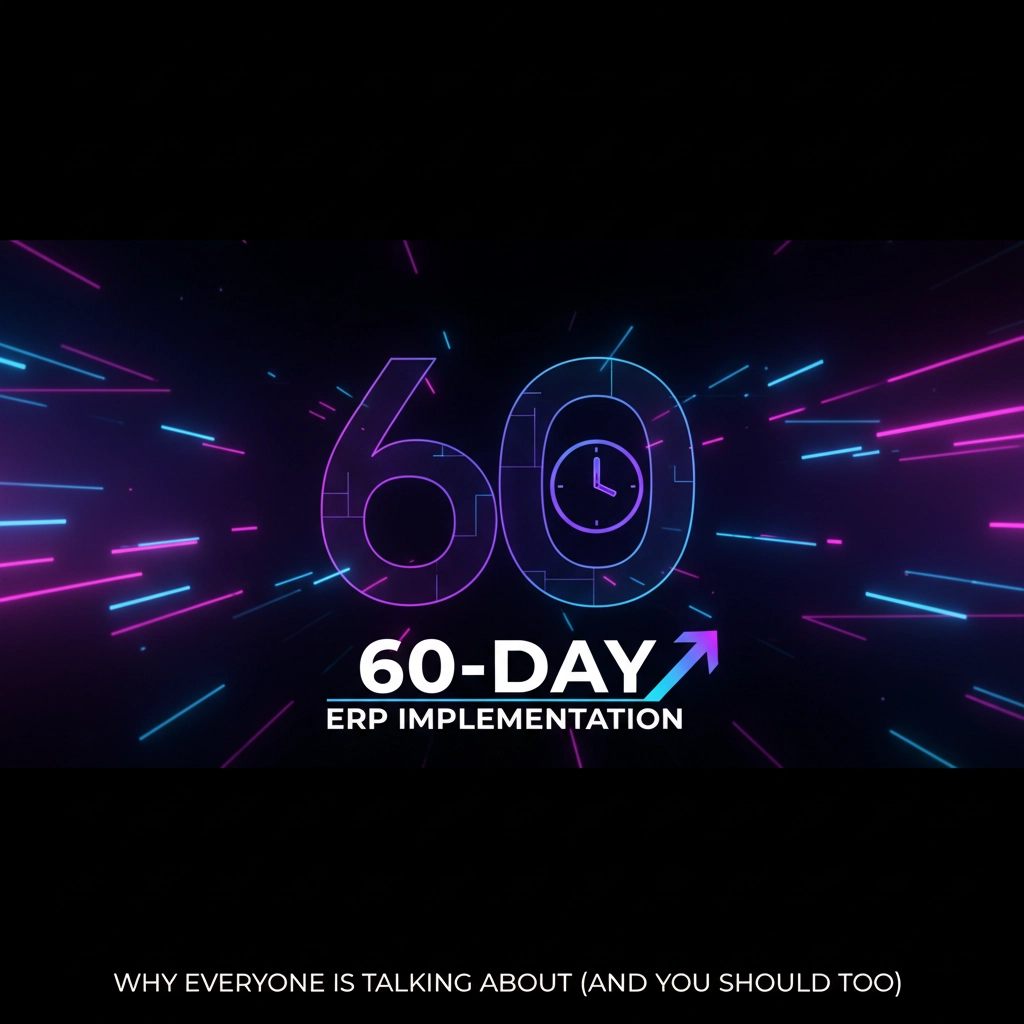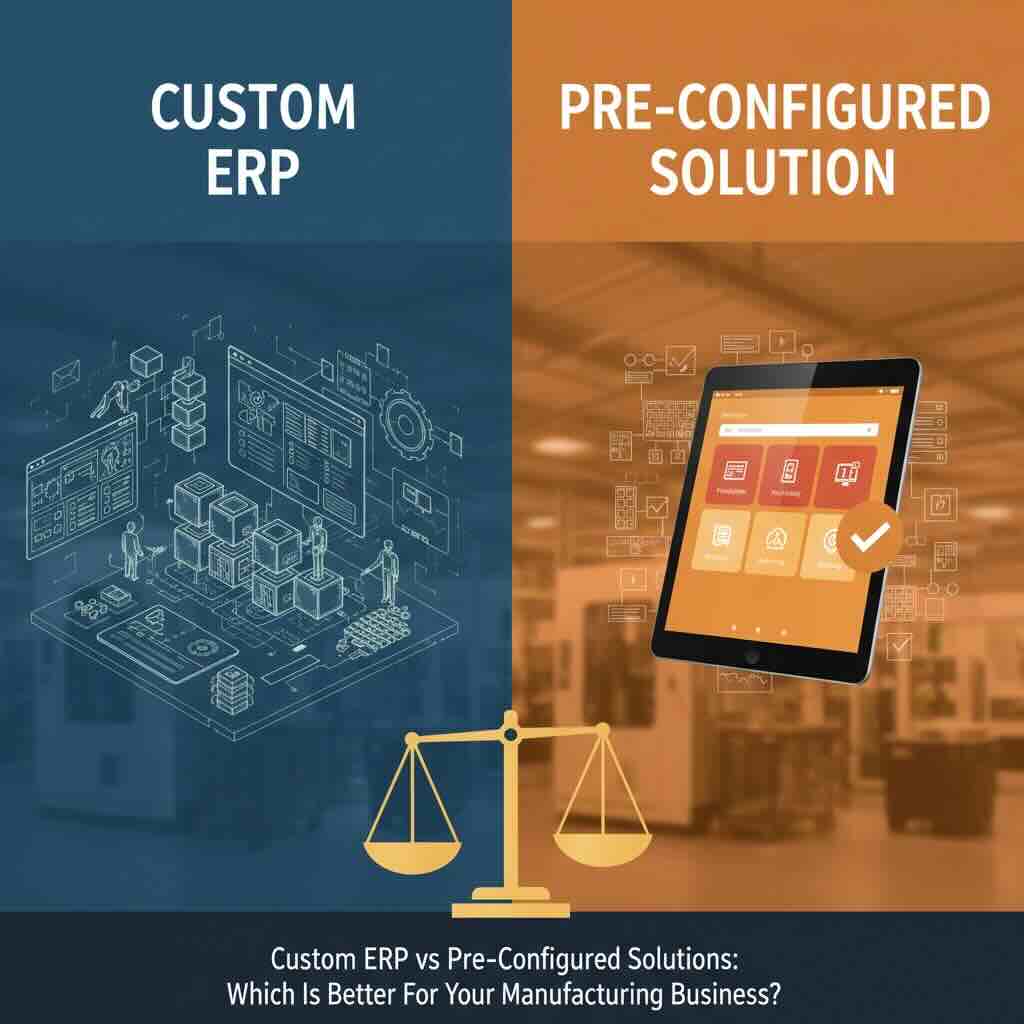Struggling With Inventory Chaos? 7 Signs Your Manufacturing Business Needs Better Inventory Management Software
How do you know when your inventory management has crossed the line from "quirky" to "completely dysfunctional"?
Founder & CEO

Let's be honest, if you're reading this, there's a good chance your inventory management feels like herding cats. You know the feeling: that sinking sensation when a critical production run gets delayed because nobody knew you were out of a key component.
Here's the thing: inventory chaos isn't just inconvenient, it's expensive. Really expensive. We're talking about tie-up capital, missed deadlines, frustrated customers, and the kind of stress that makes you question your career choices at 2 AM.
But how do you know when your inventory management has crossed the line from "quirky" to "completely dysfunctional"? Let's dive into the seven telltale signs that it's time to ditch the spreadsheets and embrace modern inventory management software.
1. Your Warehouse Looks Like a Storage Wars Episode
Walk through your facility right now. Go ahead, I'll wait.
Do you see stacks of materials that have been gathering dust longer than some of your employees have been with the company? Are there products from 2022 still taking up prime real estate while you're scrambling for space to store new inventory?

Excessive stock accumulation isn't just a space problem, it's a cash flow nightmare. Every item sitting idle in your warehouse represents money that could be working elsewhere in your business. Worse yet, older inventory often loses value over time, especially if you're dealing with technology components or materials with expiration dates.
The real kicker? You're probably still ordering more of the same items because nobody has a clear picture of what you actually have on hand. It's like buying groceries when your pantry is already full, wasteful and completely avoidable with the right systems in place.
2. Your Inventory Turns Slower Than a Government Bureaucracy
Remember that scene in "Zootopia" where the sloths work at the DMV? That's your inventory turnover rate right now.
When products sit in your inventory longer than a Netflix series takes to get renewed for a second season, you've got a problem. Slow inventory turnover is like having money locked in a safe that you never open, technically it's yours, but it's not doing you any good.
Fast-moving inventory is healthy inventory. It means your production planning aligns with actual demand, your sales team knows what they're working with, and your cash isn't trapped in materials nobody wants. But when things move slowly, it often signals deeper issues with demand forecasting and production scheduling that spreadsheets simply can't solve.
3. You're Still Living in the Paper Age (And Not in a Cool, Vintage Way)
If your inventory management system consists primarily of clipboards, Post-it notes, and the institutional knowledge of "Gary from receiving" who's been here since the Clinton administration, we need to talk.
Manual inventory tracking is like trying to run a modern race car with a horse-drawn carriage navigation system. Sure, it might technically get you where you're going, but you're going to lose to everyone else who figured out GPS.
Paper-based systems don't just slow you down: they actively sabotage your accuracy. Human error in data entry is inevitable, and when those errors compound across multiple transactions, you end up with inventory records that bear about as much resemblance to reality as a Hollywood action movie.
Real-time visibility? Forget about it. By the time your paper records get updated, your actual inventory situation has probably changed three times over.
4. Your Production Schedule Is More Like a Production "Suggestion"
Nothing ruins a perfectly good Monday morning like discovering that the critical component you need for this week's big order is mysteriously missing from your inventory. Again.
When your production deadlines feel more like wishful thinking than actual commitments, it's usually because your inventory management can't keep up with your operational needs. You're constantly playing catch-up, firefighting stockouts, and explaining to customers why their orders are delayed.
This isn't just about having enough stuff: it's about having the right stuff at the right time. Materials with long lead times should be tracked and reordered automatically. Production schedules should sync with real inventory levels, not with someone's best guess from last Tuesday's count.

The domino effect of poor inventory synchronization doesn't stop at missed deadlines. It damages customer relationships, strains supplier partnerships, and turns your entire operation into a stress-inducing game of inventory roulette.
5. "Real-Time" Means "I'll Check Tomorrow"
Quick question: What's your current inventory level for your top five components? Don't know off the top of your head? Need to go check three different systems, call someone, or physically walk to the warehouse?
Welcome to sign number five.
In today's manufacturing environment, "I'll get back to you" isn't fast enough. Your customers expect immediate answers about availability, your production team needs instant access to material status, and your purchasing department requires up-to-the-minute data to make smart buying decisions.
Without real-time visibility, you're essentially flying blind. You can't track materials through your manufacturing process, you can't quickly identify quality issues, and you certainly can't give customers the kind of responsive service they expect in our Amazon Prime world.
6. Your Suppliers Feel Like Distant Acquaintances
Supplier collaboration shouldn't feel like trying to coordinate a potluck dinner through smoke signals. Yet many manufacturers struggle with basic communication about incoming materials, delivery schedules, and inventory replenishment needs.
When your supplier relationships consist mainly of occasional phone calls and crossed fingers, you're missing out on the collaborative partnerships that modern manufacturing demands. Suppliers want to work with customers who can share real-time inventory data, provide accurate forecasts, and streamline the ordering process.
Poor supplier integration leads to coordination problems that ripple through your entire operation. You get surprise deliveries when your warehouse is full, stockouts when you thought materials were coming, and constant back-and-forth communications that waste everyone's time.
7. Your Business Decisions Are Based on Hunches and Hope
Here's a scenario that might sound familiar: You're in a meeting with your leadership team, trying to decide whether to take on a big new customer. Someone asks about your capacity to handle the additional inventory requirements, and the room goes quiet because nobody has reliable data to answer the question.
Making strategic business decisions without solid inventory analytics is like trying to navigate by the stars when you're colorblind. You might eventually get where you're going, but you're definitely taking the scenic route.
Modern inventory management isn't just about tracking what you have: it's about understanding patterns, predicting needs, and optimizing your inventory mix based on actual data rather than gut feelings. When you can't generate meaningful reports about supplier performance, seasonal trends, or inventory costs, you're operating at a serious disadvantage.
The Path Forward: From Chaos to Control
Recognizing these signs is the first step toward transforming your inventory management from a daily headache into a competitive advantage. The good news? You don't have to accept inventory chaos as just "part of doing business."
Modern inventory management software addresses each of these pain points systematically. Real-time tracking eliminates guesswork, automated reordering prevents stockouts, and integrated analytics turn your inventory data into actionable business intelligence.

The manufacturers who thrive in today's competitive environment are the ones who've moved beyond treating inventory as a necessary evil and started leveraging it as a strategic asset. They've invested in systems that provide visibility, control, and the kind of operational efficiency that lets them focus on what they do best: manufacturing great products.
Your inventory doesn't have to be chaotic. With the right approach and tools, it can become one of your strongest competitive advantages. The question isn't whether you can afford to upgrade your inventory management: it's whether you can afford not to.
Ready to turn your inventory chaos into inventory control? The solution is closer than you think, and the benefits start showing up faster than you'd expect. Because at the end of the day, manufacturing should be about making things, not constantly searching for them.
Subscribe to our newsletter today
Subscribe to our mailing list for updates and insights. No spam.





